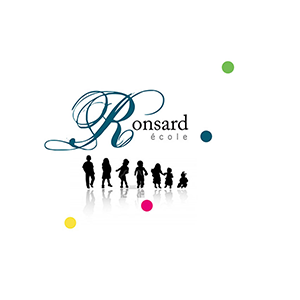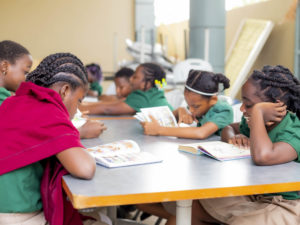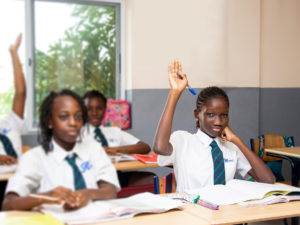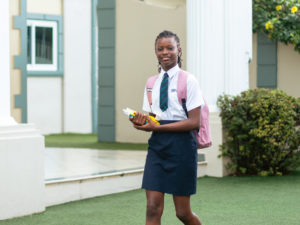The Complexities Of Bilingual Education- Is It Really For Everyone?
The Complexities Of Bilingual Education- Is It Really For Everyone?
Language acquisition may be perceived as complex but technically, in Ghana, we are all bilinguals. The processes one goes through to acquire a second local language could not be any different than those on the bilingual education journey in a formal educational setting. The only difference here is one has a more academic approach than the other.
Bilingual education in simple words means the incorporation of two languages, a native and a second language to teach academic content. Bilingualism is not an alien concept in the world of education. Over the years, it has gradually but effectively established its relevance in the formal education space.
In today’s fast-changing world, bilingualism can be considered an enviable asset. This beneficial mention however cannot cloud over what is on the other side of the fence. Feeding on the assumption that the bilingual education system is characterised by challenges is not further from the truth. The system requires students to learn the written and the spoken facets of their respective second languages to pass examinations conducted periodically which could be quite a feat.
Here, a student is acquiring knowledge in various subjects, a second language, and engaging in extracurricular activities and other school activities. In the grand scheme of things, the above-mentioned hurdles of bilingualism make the monolingual system of education seem like a piece of cake.
Fortunately, most of these hurdles of bilingual education are temporary and mostly limited to the early stages of the program. They are not disadvantages and can be thought of as challenges that can be overcome just like every impediment in life.
The monolingual system uses a single language for the impact of academic content. It is uncomplicated and straightforward. A student’s fundamental task is to study all subjects with the icing on the cake being the intentionality of doing so in a language they are fluent in—where fluency is subjective.
Whereas this is the reality for monolinguals, bilinguals on the other hand are taught in two languages making the processes of teaching and learning arguably slower at least at the initial stage.
The system practised by schools like Ecole Ronsard is exceptionally unique. Whiles the school purposively teaches the various subjects in the second language, other bilingual schools may use the languages interchangeably in class but not necessarily to teach the various subjects.
This is because there are variations to the bilingual programs and a school is at liberty to settle on what works better for them.
The model used by Ecole Ronsard is the Full Immersion Approach which facilitates students learning the second language most naturally as if it were their native language. This is because they experience it in a raw context. They hear it being spoken and are expected to answer back in it without the help of translation to their first language.
The Cambridge Curriculum, the French National Curriculum for teaching the language and Ecole Ronsard’s unique philosophy on education, all merge to form the ‘Ronsard approach’. This is a hybrid approach aimed at developing language proficiency and biliteracy. It must be noted that these frameworks individually achieve specific goals and blend harmoniously together to form a wealthy educational experience.
With that said, let’s dive into the identified curriculums;
Cambridge Curriculum
This is a standardised globally recognised educational curriculum that challenges students to reason independently.
The curricula provide the key subjects of English or as an additional language with Mathematics and Science, including other subjects.
The flexibility of this curriculum creates room for other curricula to be added, granting schools the freedom to tailor academic content that suits the needs of students be it cultural or otherwise.

LabelFrancEducation- French Curriculum
LabelFrancEducation aims at providing high-quality French-language programs that are culturally and linguistically responsive to students.
This provides French, targeted at developing second language literacy through listening, speaking, reading and writing in French using interactive and conversational teaching and learning methods.
Students after the completion of this program are proficient in French.

The Bilingual Framework
This framework is the merging of the Cambridge and the French curricula. Transitional, immersion, dual language immersion, developmental et al are all models under the bilingual framework.
Fundamental support for this framework is the English as a second language (ESL) and French as a second language (FSL) components which support students who have integrated the school after the foundational stage. Under these frameworks, students pull out of the regular English or French lesson to undergo a foundational class in their second language. They will follow this program until they reach a satisfactory level and then reintegrate into the regular class.
What has proved most effective for us over the years is the full immersion program. Teaching is divided equally between the two languages. Here students spend almost the entire school period together in the same classroom, with unadulterated exposure to the two languages, regardless of their lingual background.

Parental Framework
All of the above certainly look and sound like a lot for a student to weather through and yes, it is. For that reason and more, it is expected of parents to partake actively should they opt for bilingualism.
That brings us to the last unofficial framework that is the Parental Framework. Let’s not mince words!— bilingualism is not for everybody and most certainly not every parent.
It is for the committed parent who has understood the terms with acceptances that there will be challenges but is keen on tackling each one of them every step along the journey. It is for the parent who knows that bilingualism is a journey and not a destination.
The parent ought to show dedication, commitment and be present to be able to sell the concept to the child. Until this conscious decision is laid out clearly, parents are better off settling for other educational models as there are no quick fixes to this.
Ideally, it is best to introduce the program to children during their formative years so that it cements into a lifestyle.
As glaring as the challenges are, bilingual education is more than students fluently communicating in two languages. This ism enhances children’s cognitive development to think analytically, explore and figure things out independently.
Overall, it connects individuals to a diverse and collective cultural heritage thereby opening a wider door to social and economic opportunities amongst others.
The thing is, once the child finds his or her feet, they skyrocket in any field of endeavour. It is that evidential progress that makes every complexity that comes with bilingualism worth it.
It all starts with that one decision.






